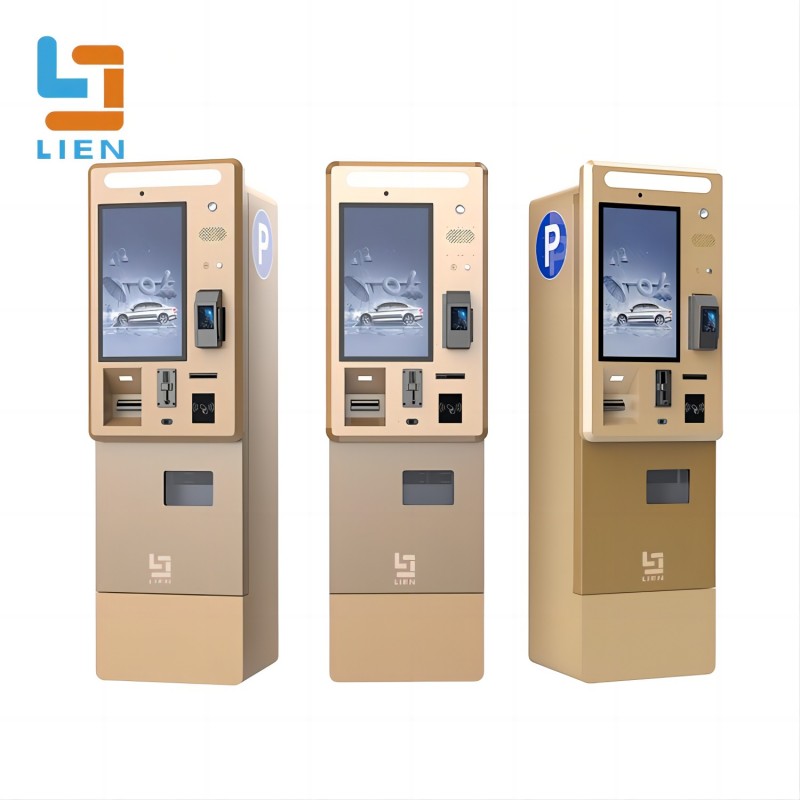An outdoor kiosk is an automated self-service device designed for installation in outdoor environments to provide convenience and streamline various operations. These kiosks typically offer services such as information dissemination, ticketing, payment processing, and interactive navigation. They are built to withstand harsh weather conditions and provide a user-friendly experience for outdoor users.

Industry Uses:
1. Information Services: Offer information about local attractions, events, and services in public spaces such as parks and plazas.
2. Ticketing Services: Allow users to purchase tickets for events, transportation, and other activities in outdoor settings.
3. Payment Processing: Provide a platform for outdoor payment transactions, such as parking fees and utility payments.
4. Navigation Assistance: Help users find directions and navigate through large outdoor areas like campuses, zoos, and amusement parks.
5. Advertising: Display advertisements and promotional content in high-traffic outdoor areas.
6. Emergency Assistance: Provide emergency contact information and assistance in remote or busy outdoor locations.
1. Durability: Built to withstand extreme weather conditions, vandalism, and heavy usage.
2. Accessibility: Provide 24/7 access to information and services in outdoor locations.
3. Convenience: Offer quick and easy access to services without the need for staff assistance.
4. Cost Savings: Reduce the need for manned service points, lowering operational costs.
5. Enhanced Experience: Improve user satisfaction by providing essential services and information efficiently.
6. Versatility: Support a wide range of functions and applications suitable for different outdoor scenarios.
1. Weather-Resistant Touchscreen Display
- Used for user interaction and information display. Typically equipped with high-resolution and ruggedized touchscreens to ensure smooth operation and visibility in various lighting conditions.
2. Barcode Scanner
- Used to scan barcodes for tickets, passes, or user identification.
3. Printer
- Used to print receipts, tickets, and other documents. Equipped with thermal printing technology for durability and clarity.
4. Card Reader
- Supports magnetic stripe and chip card reading for payment processing and identity verification.
5. RFID Reader
- Used to scan and identify items with RFID tags for access control or inventory management.
6. Camera
- Used for security monitoring, facial recognition, and user interaction recording.
7. Audio Output Devices
- Provide voice prompts and multi-language support to enhance user experience.
8. Network Connection Module
- Supports wired and wireless network connections, ensuring real-time communication and data transmission with backend systems.
9. Durable Enclosure
- Protects internal components from weather conditions and unauthorized access, often featuring a robust security lock.
1. Operating System
- Common operating systems include Windows, Linux, or Android, providing a stable running environment and diverse development interfaces.
2. Application Software
- Custom-developed self-service kiosk applications responsible for interface display, user interaction, and data processing. Typically designed in a modular fashion to facilitate feature expansion and updates.
3. Backend Management System
- Responsible for device monitoring, data collection and analysis, content management, and system maintenance. Provides remote monitoring and management functions to ensure the normal operation and timely maintenance of the devices.
4. Database System
- Stores user data, transaction records, and log information. Common database systems include MySQL, PostgreSQL, etc.
5. Network Communication Module
- Uses TCP/IP protocol to exchange data with the backend server through wired or wireless networks. Supports VPN and other secure connection methods to ensure data transmission security.
6. Security Module
- Includes firewalls, encryption modules, authentication systems, etc., to ensure the security of data and user information.
7. Interface Module
- Provides interfaces with payment gateways, information systems, and management platforms to ensure seamless integration and data sharing with external systems.